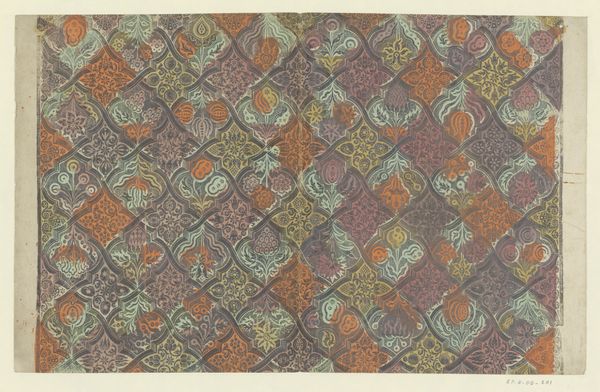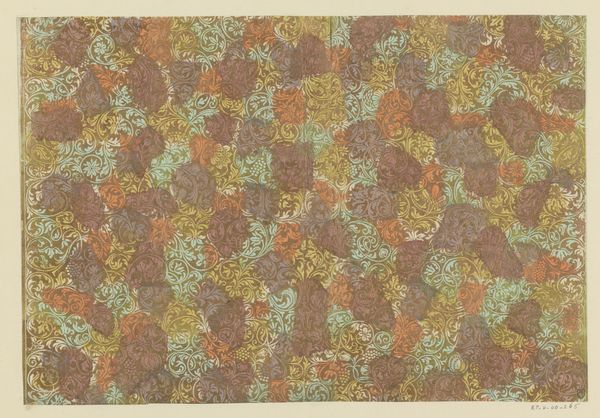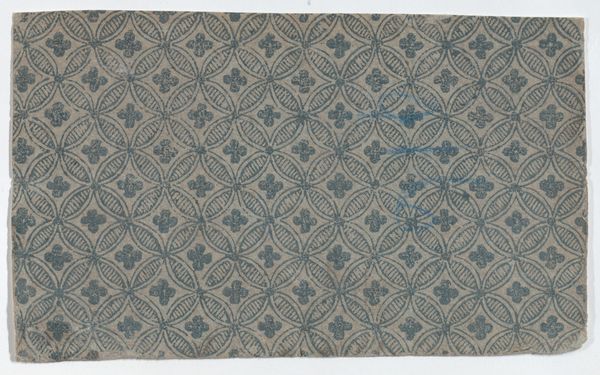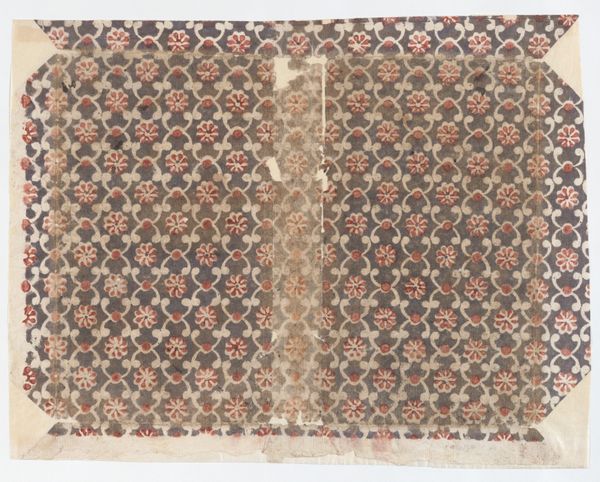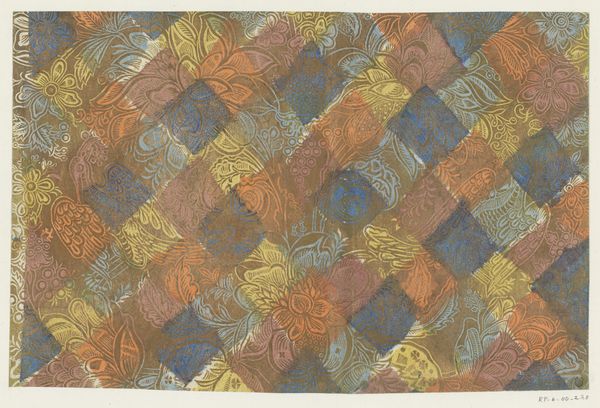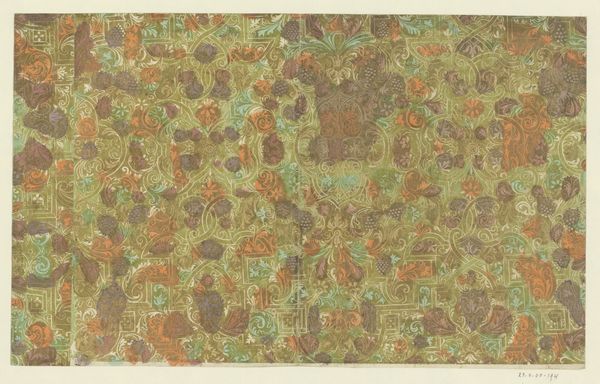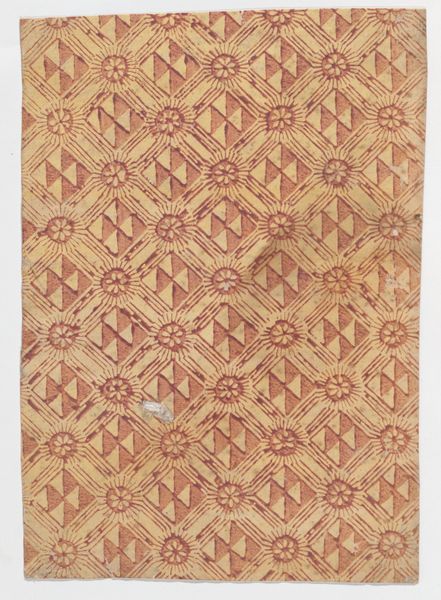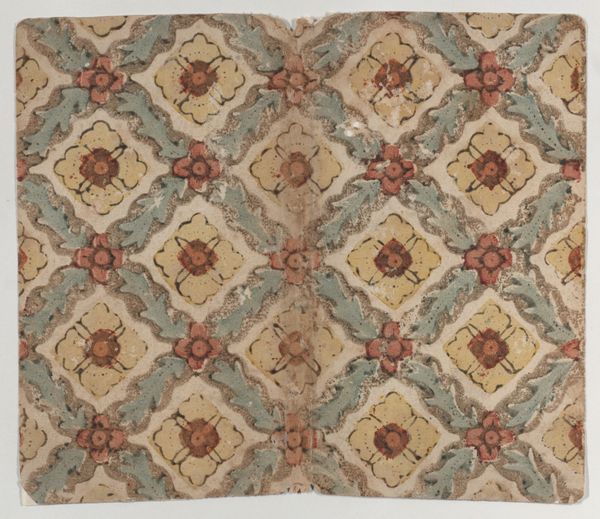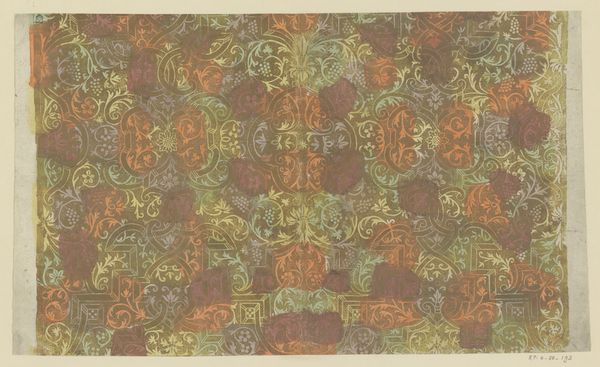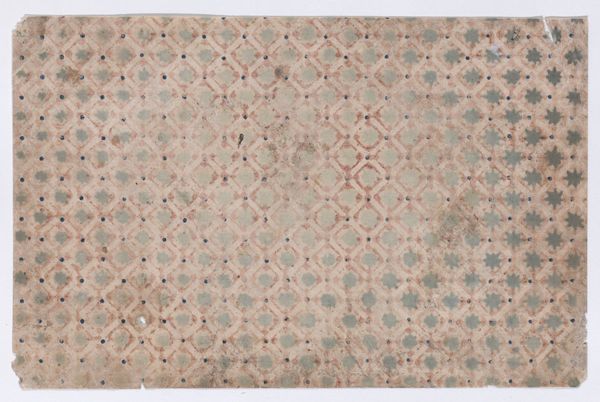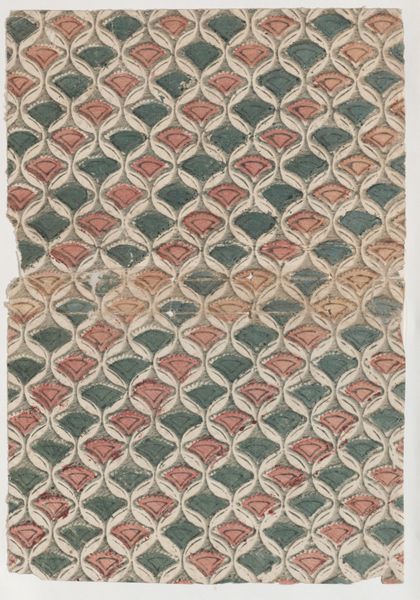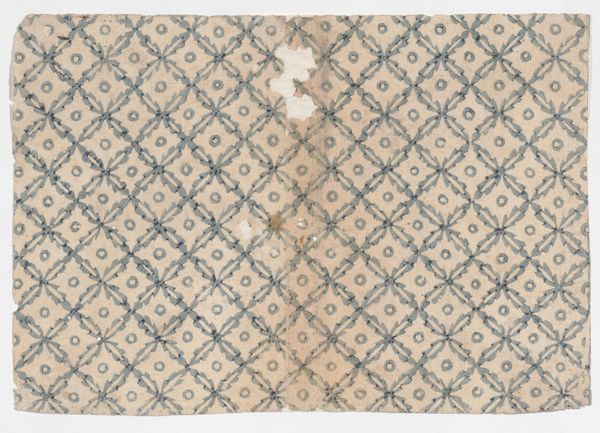
drawing
#
drawing
#
natural stone pattern
#
naturalistic pattern
#
pattern
#
pattern background
#
pattern design
#
organic pattern
#
repetition of pattern
#
vertical pattern
#
pattern repetition
#
textile design
#
layered pattern
#
rococo
Dimensions: height 244 mm, width 401 mm
Copyright: Rijks Museum: Open Domain
Curator: This drawing, titled "Sheet with tile pattern, quatrefoil-shaped", dates from between 1715 and 1748. It is attributed to Johann Michael Schwibecher. Editor: It has such a warm, earthy feel. The repeated pattern creates this subtle sense of movement. It's decorative, but restrained somehow. Curator: Restrained but firmly rooted in the Rococo period. The pattern repeats itself, conforming with Rococo art, while it showcases detailed motifs within those shapes. Think about where this kind of design ends up. Not necessarily 'high art', but a vital part of interior decoration. Editor: Exactly, it makes me wonder about the craftsperson's role and social standing during this period. Were they considered artists in their own right, or simply skilled laborers executing someone else's vision? How much agency did they really have in material and aesthetic decisions? This "natural stone" imitation suggests readily available raw materials, but labor, obviously, factors significantly into something like this. Curator: The very fact that it’s a drawing is intriguing. It raises the question of design transfer. Who’s making the drawing? Is this Schwibecher or is this after a period style of tile design being rendered on paper? The artist’s skill shapes tastes and creates demand, even if they aren't the end manufacturer. It shifts cultural values. Editor: It speaks to this shift in design itself. There is value being added through design, in addition to pure functionality. Curator: That's right, and museums also influence the value of these historical documents by contextualizing them in the current context. In a way, we create relevance and value, even centuries later. Editor: Definitely, the museum's framing elevates what might have been ordinary production blueprints, acknowledging that labor and skill hold historical value in our current climate. It is an image meant for instruction that’s repurposed as something artful. Curator: The history embedded in an object like this always amazes me – design processes, material availability, the market that sustains all of that. We’re talking about this in a context Johann Michael Schwibecher would likely find incomprehensible! Editor: A thought which prompts considering how the role of artwork will evolve even further still.
Comments
No comments
Be the first to comment and join the conversation on the ultimate creative platform.
